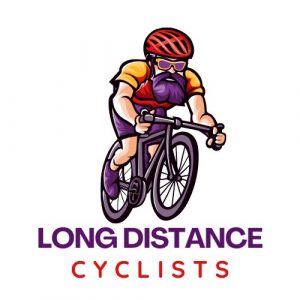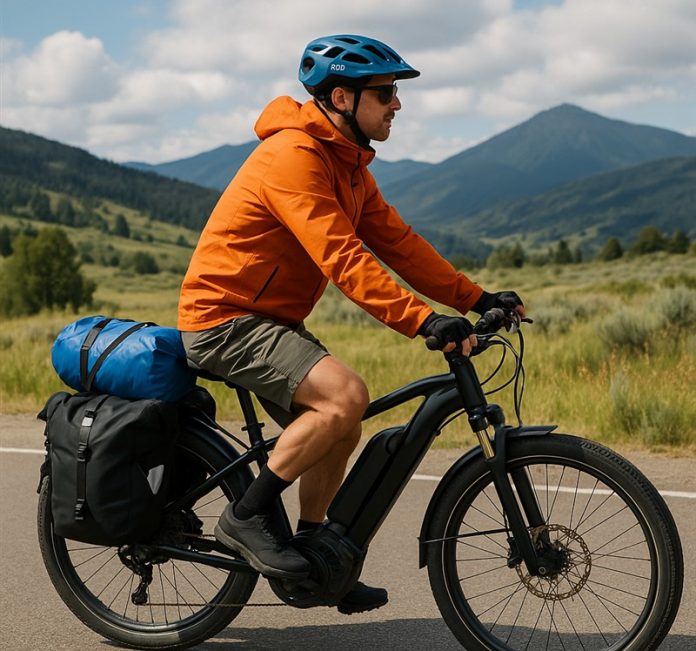As electric bicycles grow in popularity, a new kind of adventure is emerging—eBike touring. Combining the freedom of traditional bicycle touring with the enhanced capabilities of electric assistance, eBike touring allows riders of varying skill levels to explore longer distances with less strain. Whether you’re a cycling enthusiast looking to extend your range or a casual rider curious about the experience, this guide covers everything you need to know.
From the unique benefits and common challenges to a complete gear checklist, this article offers a comprehensive overview to help you get started with confidence.
What is eBike Touring?
eBike touring involves traveling medium to long distances over multiple days using an electric bicycle. These tours can be self-supported or guided and may include road, gravel, or mixed-terrain riding. Unlike traditional bicycle touring, eBikes provide pedal assistance through an electric motor, allowing riders to tackle longer routes, steeper climbs, and varying conditions without overexertion.
eBike touring is ideal for cyclists seeking adventure, exploration, and endurance without the intense physical demands of conventional bikepacking. It appeals to a diverse range of riders, including beginners, seniors, and those with physical limitations.
Benefits of e-Bike Touring
1. Extended Range and Endurance
One of the most compelling benefits of eBike touring is the ability to cover longer distances with less fatigue. The pedal-assist feature means riders can maintain consistent speeds even on uphill stretches or against headwinds. This extended range allows for more ambitious touring plans and the flexibility to explore remote areas.
2. Inclusive for All Fitness Levels
Electric bikes make touring accessible to people who might not otherwise consider long-distance cycling. Whether recovering from an injury, managing a health condition, or simply new to cycling, eBike assistance allows riders to travel alongside more experienced companions at a steady pace.
3. Reduced Physical Strain
Long days in the saddle can lead to fatigue and muscle soreness, especially when carrying gear or climbing hills. eBikes help reduce this physical burden by offering assistance precisely when needed, allowing riders to enjoy the journey rather than focusing on endurance alone.
4. Enhanced Exploration and Flexibility
With an eBike, detours and side trips are more manageable. Riders can easily extend their routes to visit local landmarks, scenic spots, or off-the-beaten-path attractions without worrying about conserving energy for the return journey. This flexibility adds spontaneity to each day’s ride.
5. Environmentally Friendly Travel
eBike touring offers a low-emission alternative to car or motorbike travel. Electric bikes have no fuel usage and minimal environmental impact and support a sustainable adventure approach. Many riders use solar chargers or renewable energy sources to power their battery packs while on the road.
Challenges of eBike Touring
1. Battery Life and Charging Access
Battery management is a crucial aspect of eBike touring. Most batteries offer between 30 to 100 miles per charge depending on terrain, rider weight, and assist level. Planning your tour around charging stations or accommodations with plug access is essential. In remote areas, charging can become a logistical hurdle. (see more in the section below)
2. Added Weight and Bulk
eBikes are typically heavier than traditional bicycles due to the battery and motor. This added weight affects handling, especially on off-road terrain or steep descents. Packing efficiently and balancing panniers is key to maintaining stability.
3. Repair and Maintenance Complexity
While modern eBikes are reliable, mechanical or electrical issues can still arise. Repairing a motor, battery, or controller on the road requires specialized knowledge and tools. Riders should carry a basic repair kit and consider tours within reach of bike service stations or support options.
4. Cost Considerations
High-quality touring eBikes can be significantly more expensive than regular bicycles. When budgeting for a tour, it’s important to factor in the cost of the eBike, extra batteries, gear, and potential maintenance. Insurance for the bike and equipment may also be necessary.
Essential Gear for E-Bike Touring
Choosing the right gear is crucial for comfort, safety, and self-sufficiency on an eBike tour. Below is a list of recommended essentials, followed by a detailed gear comparison table.
Packing Tips
- Distribute weight evenly between front and rear panniers
- Keep frequently used items accessible in handlebar bags or frame pouches
- Protect electronic components from rain and dust using waterproof covers
- Use compression sacks to save space for clothing and sleeping gear
Gear Comparison Table
| Item | Purpose | Recommended Features |
|---|---|---|
| eBike (Touring Model) | Primary mode of transport | Mid-drive motor, large battery, strong frame |
| Spare Battery | Backup power for extended rides | Lightweight, quick-swap compatible |
| Charger & Cables | Recharging at hotels or campsites | Compact, weather-resistant |
| Panniers & Bags | Storage for gear and clothing | Waterproof, high-capacity, secure mounting |
| Multi-Tool & Repair Kit | On-the-go maintenance and repairs | Includes hex keys, tire levers, patch kit |
| Portable Pump | For flat tire repairs or pressure adjustments | Lightweight, frame-mountable |
| Helmet | Rider safety | MIPS technology, well-ventilated |
| Navigation Device/GPS | Route planning and tracking | Long battery life, offline map support |
| Lights (Front & Rear) | Visibility in low light | USB-rechargeable, waterproof |
| First Aid Kit | Handling minor injuries | Compact and tour-specific |
| Lightweight Tent or Bivvy | Shelter for multi-day tours | Quick setup, compact packing |
| Power Bank | Charging phones and accessories | High-capacity, solar-compatible |
| Clothing Layers | Comfort across changing weather conditions | Moisture-wicking, breathable, weather-resistant |
Planning Your eBike Tour
1. Route Selection
Choosing a route suited for eBike touring involves more than distance. Evaluate the terrain, availability of charging points, traffic conditions, and accommodation. Dedicated cycle paths, rail trails, and national parks are often ideal for a scenic and stress-free ride.
2. Daily Mileage Goals
Set realistic expectations for daily mileage. While eBikes can help you ride further, consider factors like elevation gain, weather, and road surface. Most riders average between 40 to 70 miles per day on a tour, depending on fitness and bike specifications.
3. Charging Strategy
Plan your tour around access to charging outlets. This could be at cafes, hotels, hostels, or campsites. Some cyclists carry solar panels or portable generators, though these may add weight. Always carry a backup charging plan in case of battery drain.
Where to Charge Your eBike While Touring
Planning where to recharge your eBike is essential for a smooth touring experience. Fortunately, there are several practical options available along most touring routes:
- Campgrounds and Campsites: Many campsites offer power outlets for guests, especially those with RV hookups or communal facilities.
- Hotels, Hostels, and B&Bs: Overnight stays in accommodations usually include access to electrical outlets, either in-room or in common areas—always ask ahead.
- Cafés and Restaurants: Friendly owners may allow you to charge your battery while you eat, especially in cycling-friendly regions.
- Visitor Centers and Public Buildings: Libraries, tourist information centers, and community halls often provide charging options, sometimes even designated for cyclists.
- Train Stations and Transit Hubs: Many now offer charging stations as part of green transportation initiatives.
- Dedicated eBike Charging Stations: Growing in popularity across Europe and North America, these stations are sometimes found along popular cycling routes or at trailheads.
To stay prepared, bring a compact charger and consider carrying a lightweight power bank or solar panel for added flexibility.
Safety Considerations
- Check your equipment daily for loose bolts, tire pressure, and battery charge
- Wear visible clothing and use reflective gear, especially in low light
- Ride within your limits—e-assist makes it easy to push harder than usual, which can lead to fatigue or mistakes
- Understand local eBike laws related to speed limits, helmet requirements, and permitted paths
Who is eBike Touring For?
eBike touring is an excellent choice for a broad audience:
- Beginner cyclists who want to experience long-distance riding without exhaustive training
- Older riders looking to stay active while preserving joint health
- Adventurous travelers interested in exploring rural or remote areas
- Eco-conscious individuals seeking low-impact travel
- Couples or groups with mixed fitness levels, allowing everyone to ride together
Final Thoughts
eBike touring opens up a world of possibility for riders of all backgrounds. With the right preparation, gear, and mindset, you can enjoy multi-day cycling adventures that would otherwise be out of reach. Whether you’re winding through countryside roads, climbing alpine passes, or cruising along a coastal route, the electric boost turns challenges into opportunities and effort into joy.
Have you toured on an eBike, or do you plane to? Leave your comments below and help other eBike tourers to make a success of their eBike touring adventures.















